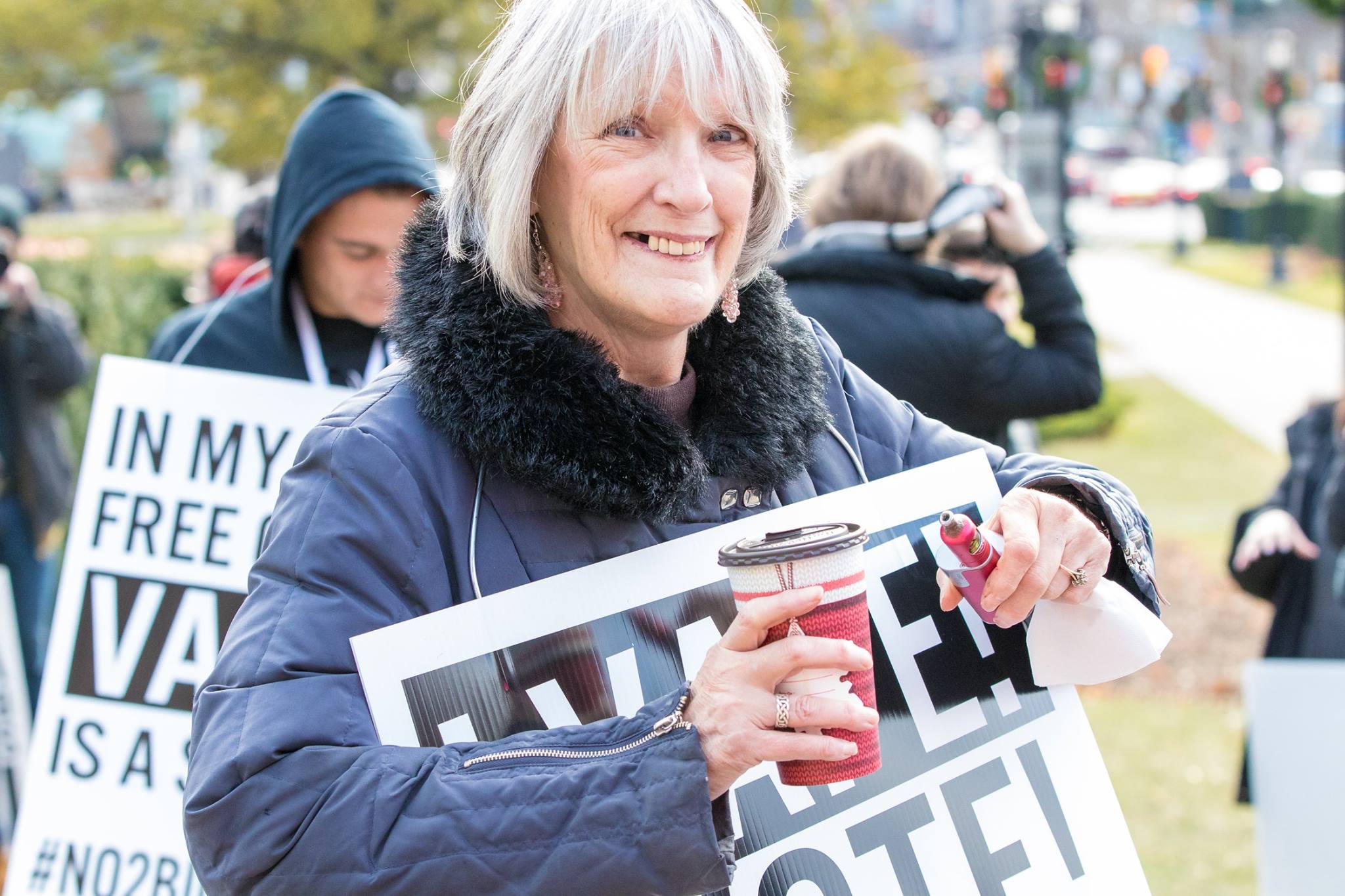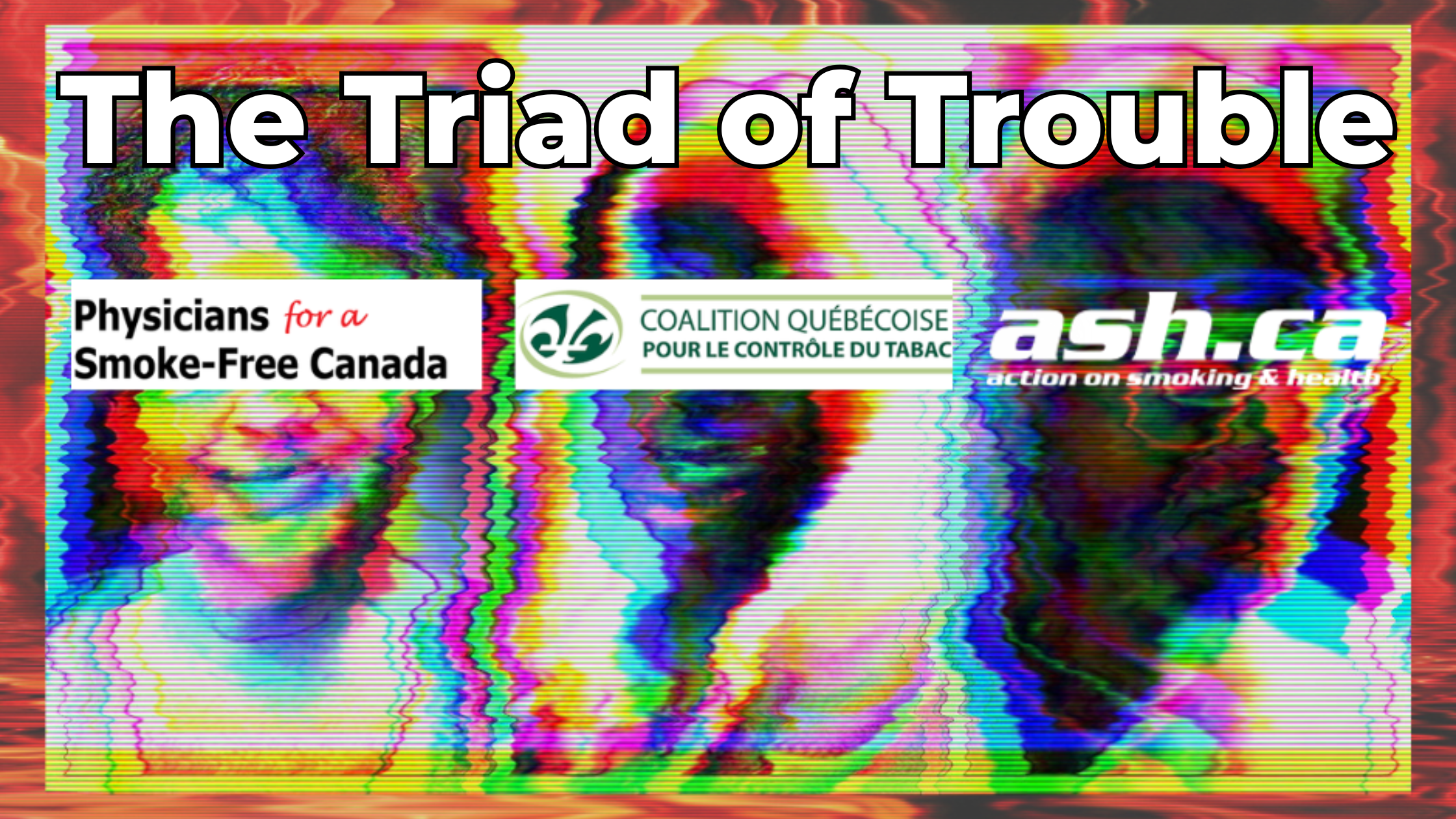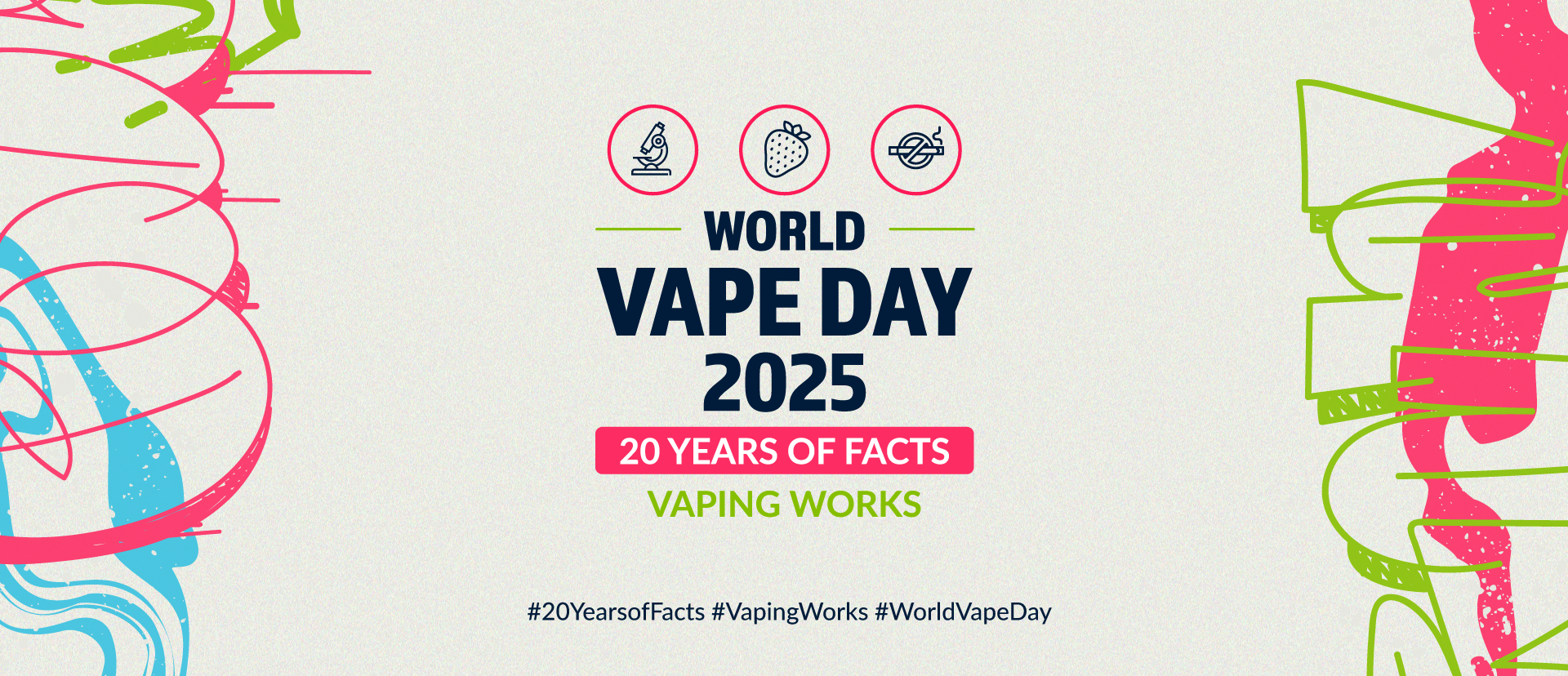Thank you for giving me the opportunity to express my opinions on the TVPA and its regulations as well as its effects on Canadian society.
I am a retired from the computer industry and education. I have no affiliations or connections to any industry, except as a customer of various vendors of vaping devices and eliquids.
I started smoking in 1968 and tried numerous times to quit, using most of the products and techniques recommended by Health Canada and other groups as well as books and willpower. The recommended products were annoying and all but useless. The latter two routes did help me to stop for a couple of years, but I found it very difficult to avoid relapse under stress, and I returned to smoking several times.
In 2014, my doctor told me that I was showing indications of developing COPD and gave me a prescription for Champix (recommended by HC.) I bought a box, atInstead, I did some online research, learned about the success that smokers were having in switching to vaping, and ordered a starter “kit”. My order arrived on April 14 and I smoked my last cigarette while the battery of my device was charging. I have never been tempted by a cigarette, even though my husband smoked in the house for several years, and my doctor now pronounces my lung function as “perfect” at every examination.
I have extracted your headings and questions below and have written my responses under each question.
Protect young persons and non-users of tobacco products from inducements to use vaping products
- Are the current restrictions on advertising and promotional activities adequately protecting youth?
Actually, before vaping was legalized in Canada in 2018, there was very little advertising of vaping products. The industry comprised small independent manufacturers and vendors who couldn’t afford the expense, and advertising was mostly by word-of-mouth from vaper to smoker. The current restrictions would be adequate if they were enforced properly. They were not enforced properly in the Fall of 2018 when JUUL and Vype started selling in convenience stores and used large displays that followed the “letter” of the law but still promoted vaping with these products.
- Are the restrictions within the Act and its regulations sufficient to address potential inducements to use these products by youth and non-users of tobacco products?
No, since most of the advertising and promotion is done by the press and by NGOs in their efforts to sensationalize youth vaping. Almost every article on vaping in the press or on NGO Facebook pages is headed by a stock image of a young person vaping, or of a group of kids sitting in a cloud of vapour. The Lung Association advertised the use of nicotine in its TV campaign about flavours. Even Health Canada decorated subway stations with messages about vaping, as did the CN tower in its “anti-vaping” colour display. Nothing could incite curiosity about vaping in young people or non-users than messages and images like these.
Any vape manufacturer or vendor who displayed any of these images or campaigns would end up in court rather quickly.
- Are there other measures that the Government could employ to protect youth and non-users from inducements to use vaping products?
Yes. The government could do as authorities in the UK did – encourage vaping as a much safer alternative to smoking. Treat it as a consumer product that is much safer than smoking and focus on the mature people who need it for their health. In other words, remove the “risk and rebellion” features and treat vaping in the way it was intended.
- Does the TVPA contain the appropriate authorities to effectively address a rapidly evolving product market and emerging issues such as the observed increase in youth vaping?
Probably not, because the press like sensational stories and there are issues around freedom of the press. It would be nice if the government and Health Canada set an example by providing a more balanced view of vaping and promoted current scientific findings on the success of vaping for smoking cessation rather than numerous vague warnings of “might”, “may” and “could” risks and few mentions of possible benefits of vaping.
- Has scientific evidence emerged in this area since the legislation was enacted in 2018 that points to the need for additional action or further restrictions?
No. In fact, the latest data shows that the published hysteria over youth vaping has been overshadowed by COVID concerns, and the youth vaping rate has actually dropped. (See your own graphic.) In addition, recent studies have shown that young people are influenced by their peers and family more than by any promotion from the vaping industry.
Protect the health of young persons and non-users of tobacco products from exposure to and dependence on nicotine that could result from the use of vaping products
Questions:
- Are the current restrictions in the Act and its regulations sufficient to protect the health of young persons from exposure to and dependence on nicotine that could result from the use of vaping products?
Absolutely. The 20 mg limit limited the ability of kids to get a “buzz” from vaping. Since current science shows that pure nicotine (the grade used in regulated vaping eliquid) is not strongly addictive (see the work of Dr Paul Newhouse of Vanderbilt University), kids are in more danger from drinking high-energy drinks or alcohol. It’s probably an unintended consequence that some heavy adult smokers find that this lower nicotine level makes it harder for them to switch to a much safer alternative.
- Are the new restrictions on nicotine concentration levels sufficient to protect youth and non-users of tobacco products from nicotine exposure? If not, what additional measures are needed?
If you banned all nicotine in vapes, the “buzz” part of the youth “problem” would probably end. However, that’s only one reason why kids say they vape; they also do it because it is so vividly advertised in the media as something all cool kids are doing.
There would in all likelihood be an increase in youth smoking (see the result in Nova Scotia) or alcohol or cannabis use. There would also be an increase in adult smoking – but you don’t seem concerned about that.
The decrease in the allowed nicotine level has already done enough damage with few gains, so it would be very foolish to tamper with it further.
- Are there other measures that the Government could employ to protect the health of young persons from exposure to and dependence on nicotine from vaping products?
Yes. Enforce the current laws against sales to young persons. If a young person is caught vaping, lay charges against the parent or adult who provided the device. Don’t punish adults who use vaping to stay away from cigarettes for the sins of other people’s kids.
Also, encourage the NGOs (Lung, Cancer, Heart & Stroke, etc) to stop advertising youth vaping. I pointed out to the Lung Association that their Facebook image of a teen in a cloud of vapour was banned by law; they responded that it was a “health message”. I replied that this might be true if the kid were vomiting from a nicotine overdose, but as it was the picture showed a youth having fun. I received no reply.
- Has scientific evidence emerged in this area since the legislation was enacted in 2018 that points to the need for additional action or further restrictions?
Not that I’ve noticed, and as I’m retired and have more leisure time, I’ve probably read more evidence than most of your “experts”.
Protect the health of young persons by restricting access to vaping products
Questions
- Are measures in the Act sufficient to prevent youth from accessing vaping products? If not, what more could be done to restrict youth access to vaping products?
Vape stores are required to check ID and refuse entry to youth. They are also required to cover their windows so that youth cannot be enticed by the display of devices and eliquid bottles. The bottles themselves cannot indicate the flavours they contain and are so plastered with the required warnings that it’s hard to identify the flavour! All of this is already overkill.
The devices are too easy to obtain and the eliquid too easy to make in a kitchen sink, so further regulations will likely have dangerous consequences. Your data makes it clear that a large proportion of young vapers obtain their devices from social connections. These could be older friends or siblings, or even parents who want to deflect their children from the far more dangerous tobacco cigarettes. Any additional restrictions that you apply will simply encourage unregulated “black market” or Do It Yourself endeavours which are far more dangerous than a regulated industry.
- Are there other measures that the Government could employ to protect youth from accessing vaping products?
Increase the penalties for retail infractions of the laws and enforce the current laws. For example, in the Fall of 2018, inspectors were so busy counting the old bottles of eliquid with tiny pictures of an animal in dedicated vape stores that they didn’t notice the huge displays of JUUL and Vype in convenience stores. Since both of these products come in very plain packaging and in limited flavours, it’s obvious that these factors were not driving factors in youth uptake.
- Has scientific evidence emerged in this area since the legislation was enacted in 2018 that points to the need for additional action or further restrictions?
On the contrary. Fewer kids are smoking, fewer are vaping. Meanwhile, thousands of adult smokers have died because you have made it more difficult for them to switch to a safer alternative. I believe that it would be instructive to examine the results of the restrictions put in place in the various provinces. It’s quite obvious that smoking has increased and that there is a thriving cottage industry in providing for the demand for effective and enjoyable vaping products in those provinces.
Prevent the public from being deceived or misled with respect to the health hazards of using vaping products
Questions
- Are the current measures in place sufficient to prevent the public from being deceived or misled about the health hazards of vaping products?
The current measures very misleading. Health Canada agreed to supply statements that vaping vendors could use characterize the relative safety of vaping (in contrast to cigarette smoking) and has never done so. It is accepted by most authorities, world-wide, that vaping presents less than 5% of the danger of smoking, but the Health Canada site exaggerates every possible harm and turns slight dangers into looming catastrophes. This is blatant deception.
- What additional measures would help reduce the misconceptions about the health hazards of vaping products?
Health Canada could begin to tell the truth, stop alarming the public, and stop giving the press ammunition for its sensational coverage of the issue.
Why is it that when I’m in hospital for the procedures that come with age (colonoscopy, hip surgery) and I reply to the question about my smoking status that I quit 8 years ago and now vape, the doctors all congratulate me and mark me as a non-smoker? Why does Health Canada consider its opinion of more value than the opinion of doctors who actually work with smokers and vapers and see the relative risk and the beneficial effects of switching from smoking to vaping?
- Has scientific evidence emerged in this area since the legislation was enacted in 2018 that points to the need for additional action or further restrictions?
There are many studies showing that vaping poses little risk in comparison to smoking and other activities. Health Canada should pay attention to them instead of listening to entities that rely on the Pharmaceutical Industry, because it’s obvious that vaping poses a major threat to the profits of that industry. That may not be scientific evidence, but it is common sense.
Enhance public awareness of health hazards
Questions
- Have public awareness efforts been effective at educating Canadians about the health risks of vaping products?
Apparently not. From your text in this document: “For adults who smoke, there appears to be a lack of awareness that vaping products are a less harmful source of nicotine for those who currently smoke and switch completely to vaping.” Gee, I wonder why that is!
Lying to the public and presenting exaggerated information about risks (and little information about benefits) may have short-term results, but as people discover that they’ve been misled they lose trust in the “authorities”. I would have thought that people would recall the effect of all the anti-marijuana propaganda on youth some decades ago.
As for the results of your education campaign Consider the Consequences of Vaping, I’m surprised that you consider a 26% success rate as something to celebrate! $13 million is a lot of money to spend on misleading young people with hyperbolic scare stories when more realistic information is readily available online. Many of the other 74% of the kids probably snuck out for a vape and a giggle together after the presentation.
- What more could be done to educate Canadians about the health risks of vaping products?
Tell the truth – spell out the benefits to smokers: ease of switching, improved health, better self-esteem, enjoyable activity, positive social interaction, less fear of smoking-related disease. Stop alarming parents with exaggerated risks and dangers, and instead educate them so that they can explain to their children that vaping is a life-saver to adult smokers and not a toy to be misused.
In fact, I would suggest a mandatory course on vaping in middle and high schools. Young people should be treated as students and not passive recipients of information. They could be required to work on projects that require research and thought on a variety of topics such as
- Safe Handling of Lithium Batteries
- How to Clean a Child-Resistant Vape
- Why the Press Release of Study XXXXXX Doesn’t Match the Results
- How Ohm’s Law Affects Vape response
- The Strange History of Nicotine’s Lethal Dose Definition
- How to Make Flavoured Eliquid in your Kitchen
The last session could include a visiting speaker – the most boring older ex-smoker available – who would talk about his/her smoking journey, discovery of vaping, and resulting better health and well-being after the switch.
All of this would – I predict – make vaping appear rather tedious and ordinary and would remove much of the excitement and the thrill of the “forbidden”.
- Are there still knowledge gaps to fill with regard to the health risks of vaping products? If so, what areas should research focus on?
Yes, there are major gaps in that the journals and the press appear to favour research that suggests a health risk. We need more high quality studies on the health of adults after they have switched from smoking to vaping. We need to keep track of the youth vaping rate with detailed analysis of how many youth vape daily as opposed to once a month at parties, how many of them were originally smokers, how many become daily smokers after first trying vaping. In other words, reliable data that is not based on conjecture (e.g,. Barnfield UWaterloo, 2015) and not released before all the data is available (i.e. Hammond, UWaterloo 2019).
- What approach should be taken to close the gap between scientific evidence and public perception so that youth and non-users of tobacco products are aware of the health risks of using vaping products, while adults who smoke are aware that they are a less harmful alternative to tobacco if they switch completely to vaping?
Please see my other answers in this section.
Conclusion
- Is there anything else that you would like to add as it relates to any of the topics covered in this discussion paper?
Yes. The TVPA is described in the legislation as “a legal framework for regulating vaping products to protect young persons from nicotine addiction and tobacco use, while allowing adults access to vaping products as a less harmful alternative to smoking.”
This consultation omits any reference to the goal of the act in bold. In fact, the millions of adult smokers whose health and lives are at risk have not been given any consideration. Some of the legislation enacted across Canada has had a harmful effect on these people.
- Are there any gaps in the authorities under the operation of the Act, or the vaping-related provisions, that you believe should be addressed?
Yes. The interests of adult smokers and those adults who have stopped smoking because they have switched to vaping have been ignored entirely. Health Canada should listen less to the various NGOs and the anti-tobacco zealots, because these bodies are apparently quite prepared to sacrifice Canadian adults for some purpose that is incomprehensible to me.
My personal experience factors into my views. My husband also smoked – he was given a prescription for cigarettes when he was 4 because back in the 1940s it was believed that smoking helped lung function. Although I easily switched from smoking to vaping in 2014 and encouraged him to do so, he hesitated because of all the anti-vaping propaganda, the warnings of possible health risks and the complete lack of “official” encouragement. He suffered terribly with COPD and died in 2019. I do believe that if the press, the NGOs and Health Canada had been more open to the benefits of vaping he might have been given more time or less torment.
Do you have suggestions for what could be included in future reviews of the TVPA?
It would be helpful if Health Canada made a distinction between the “traditional” Canadian vaping industry and the Big Tobacco-backed industry that entered Canada in 2018. They are, in fact, completely different entities that are in competition.
The Canadian industry is mostly composed of ex-smokers who want to help smokers switch to a safer alternative (while earning a living, of course!) The dedicated vape stores sell the devices, but they also provide counseling and guidance to smokers on how to use them. They provide encouragement and help, and the drop in the smoking rate in the last few years shows that they have been more effective than any other support.
The Big Tobacco-funded industry has a powerful financial backing and a very small product base. It does not provide the support services of the “traditional” industry. The regulations in the TVPA hardly affected this industry, but had a major impact on the traditional industry, which scrambled to meet the requirements.
The proposed flavour ban (coupled with the new proposed tax on eliquid) will probably wipe out most of the dedicated vape stores, as most adult vapers will be forced to find other sources for palatable and affordable eliquid. One of these sources will likely be the Tobacco Industry – I hope they show gratitude for your thoughtfulness in eliminating their competition!




